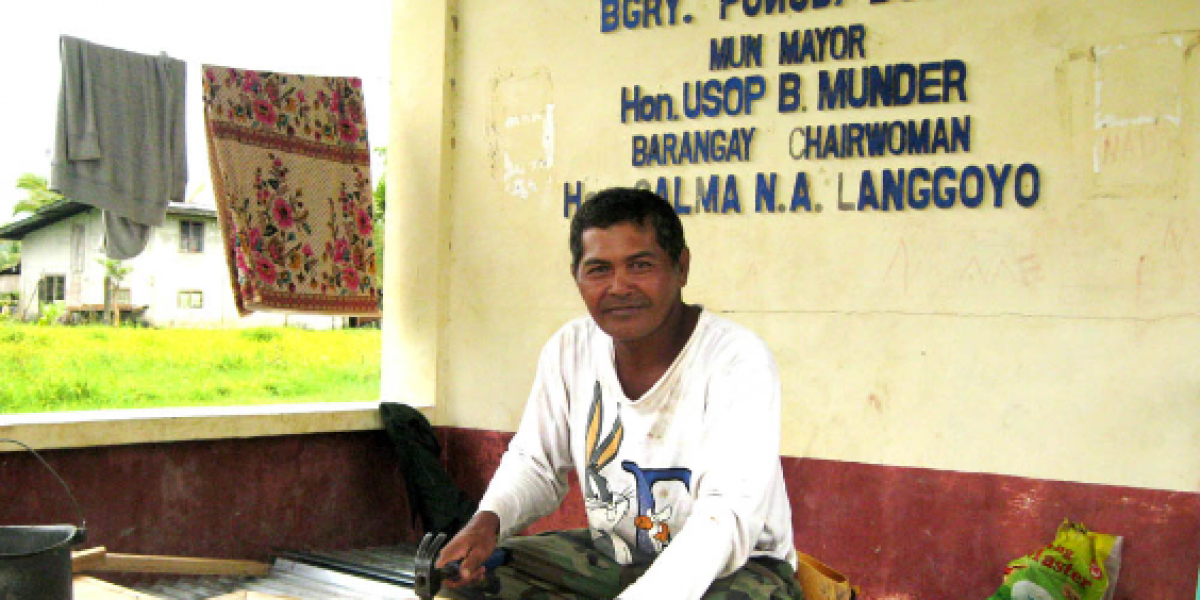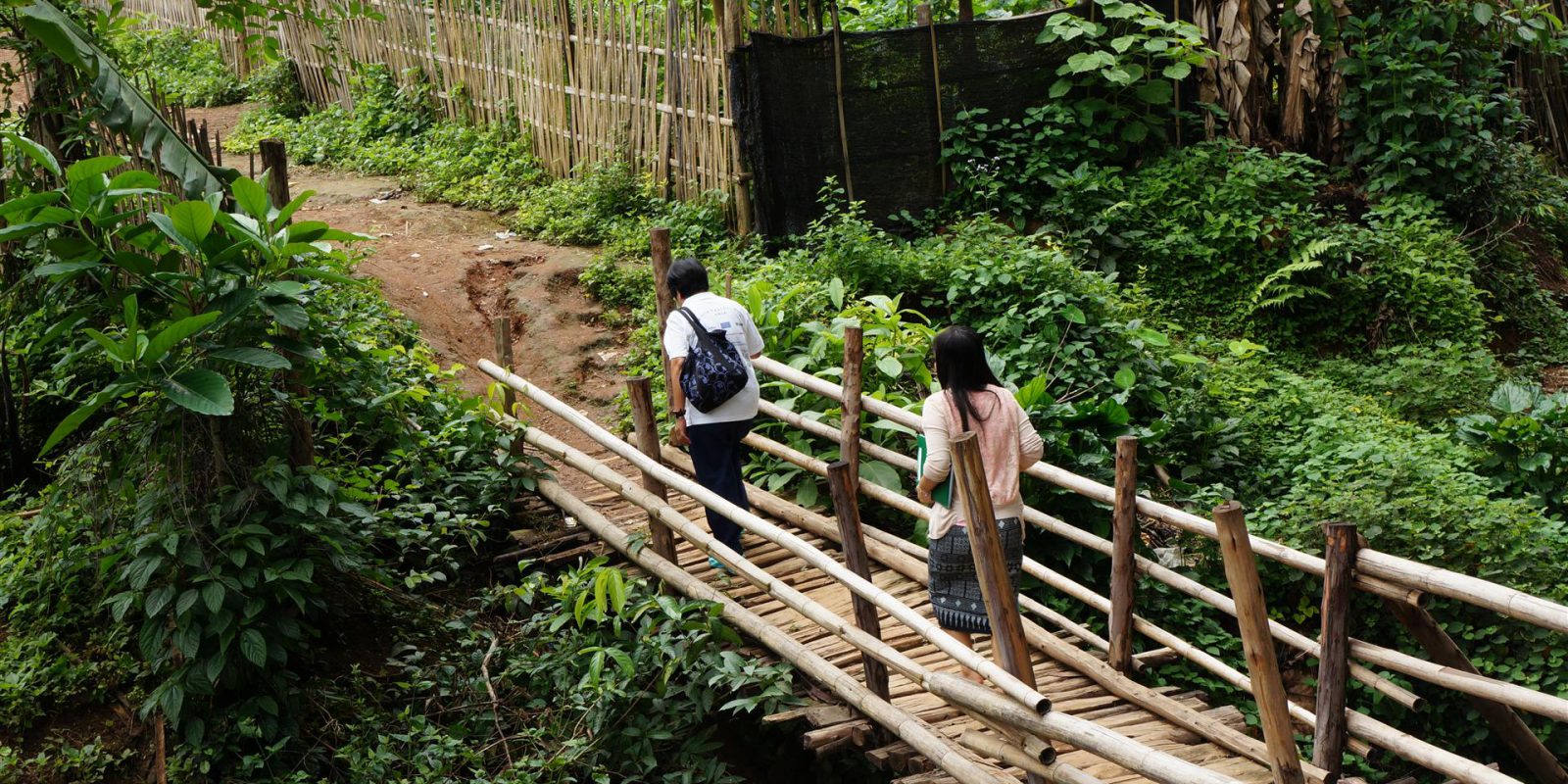Philippines: carpentry in a post-conflict and post-disaster community
16 April 2012|Louie Bacomo

Bubong, 16 April 2012 – Fortunato Anggot, 56 years old, has been a carpenter since he travelled with his father as a 16-year old apprentice.
.
“I’ve learned carpentry from my father, who was called to build houses in many places”, he said while fixing a window jam. Perhaps that explains why he has brought his own 18-year old son along for this assignment.
.
JRS hired Natoy, as friends call him, to build permanent houses for the 50 Muslim families who lost their homes during the typhoon Sendong that hit Bubong, Lanao del Sur in December 2011. It is the rainy season, so Natoy and his son are sheltered in the village hall where they live and work, shaping wood into doors and windows.
.
Natoy has been doing carpentry in post-disaster and post-conflict Muslim communities in Mindanao for four years. The JRS local partner, MuCAARD, first hired him to build core shelters for Muslim families whose houses were burnt during the 2008 violence.
.
“I have worked in places where it is hard to sleep soundly at night. I always remember the exit route in case armed groups decide to attack”, he said.
.
But the Muslim residents here have assured him of his safety as he builds their houses.
.
“They respect me even if I am a Christian and I have no problem with them”.
.
The place where Natoy lives is a mixed community of Christians and Muslims. His brother has married a Muslim. In 2008, his town in Kolambugan, Lanao del Sur was attacked by Moro rebels and houses would have been completely burned down, if not for the intervention of Muslim leaders living with them.
.
Rebuilding a community. Back in Bubong, Natoy assesses the task ahead. He has already put up 15 houses with the assistance of the community. The family who will own the house helps haul the timber and provide an extra hand in the laborious process of roofing, walling, and flooring.
.
“There are aspects in building the house that I have to personally take over such as scaling and measurements, polishing the timber to shape”, Natoy said, explaining the technical components of carpentry.
.
But the work is not always smooth. There are times when the extra help is not there, as families must work on farms or gather pebbles to sell instead of helping him finish the house.
.
There are more houses to be built after the first 15 are finished. Natoy remains positive to accomplish his task despite the challenges: irregular rains in summer, the strong winds last week that blew away the roof of some houses, and the ongoing rido (ethnic conflict) that turned violent in March.
.
Watching Natoy fit the zinc roof into the structure and work with the family who will live in the house, I can see his commitment. I can also see that something more than housing is being built in this Muslim community. Trust and dialogue about life emerge between him, a Christian carpenter, and the Muslim community with whom he works. It struck me that in the end, this dialogue of life and faith often becomes more solid and enduring in the process of reconciliation in post-conflict and post-disaster communities than the physical houses they will build.
.
“I work as hard as I can and people know that. I have a commitment to build these houses for the typhoon survivors in this area”, he said.


